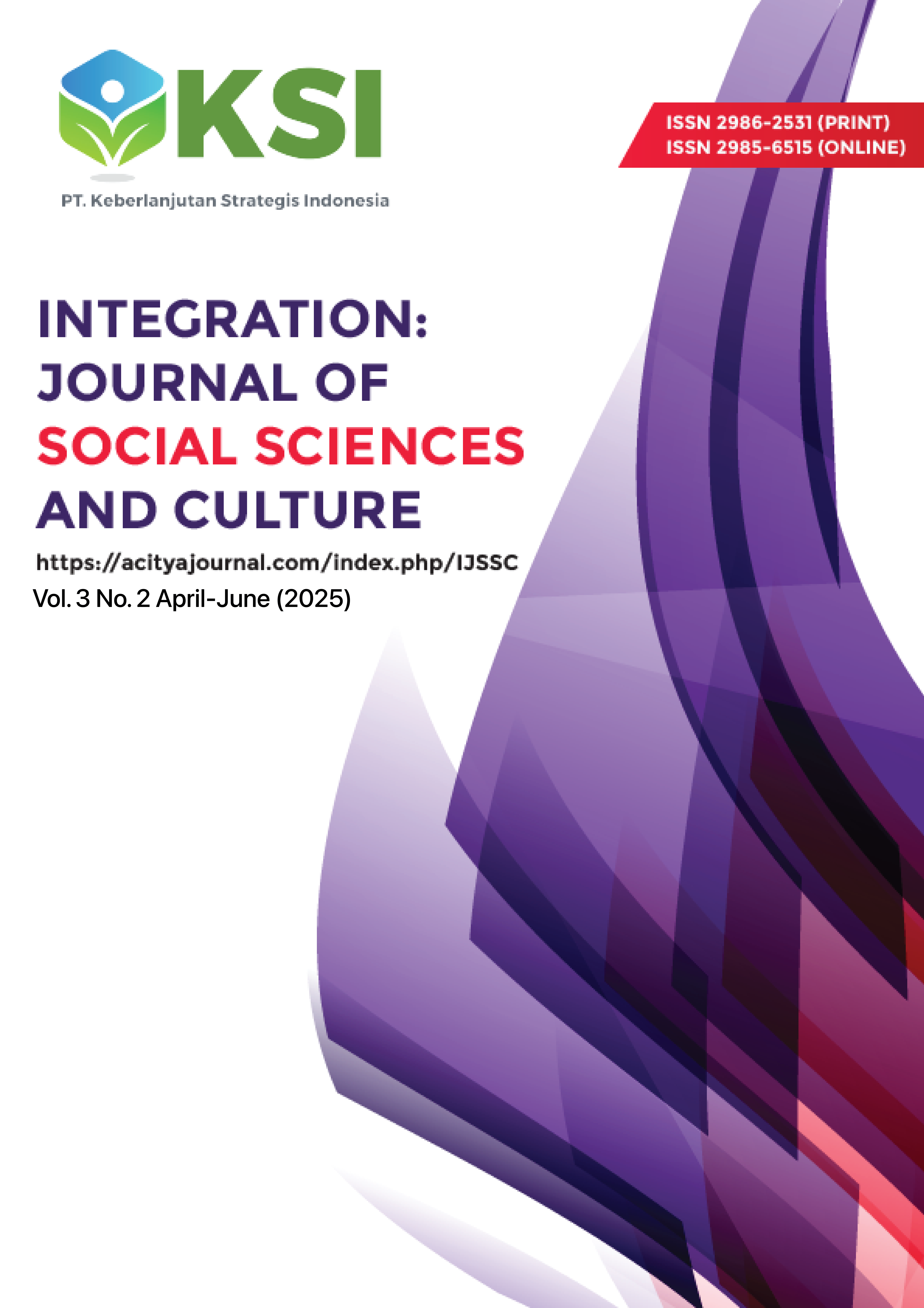Religious Transition from Islam to Non-Islam: Legality, Sanctions, and Procedures in Indonesia and Malaysia
DOI:
https://doi.org/10.38142/ijssc.v3i2.281Keywords:
Apostasy, Sharia Law, Freedom of Religion, Indonesia, MalaysiaAbstract
Purpose:
The urgency of this topic lies in the increasing tension between religious norms, individual constitutional rights, and the implementation of positive law, which is often ambiguous or repressive. This study aims to systematically analyze and compare the legal aspects, sanctions, and administrative procedures of conversion from Islam in both countries.
Methodology:
This study uses a qualitative approach with a normative-comparative method, utilizing secondary data in the form of legal regulations, court decisions, and current academic literature. The analysis is carried out through document studies and content analysis of the national legal framework and religious institutions that play a role.
Findings:
The results of the study show that Malaysia has a more structured legal system through the Sharia Court in regulating applications to leave Islam, although the procedures tend to be restrictive and accompanied by administrative or criminal sanctions. On the other hand, Indonesia adopts a more flexible administrative approach but is vulnerable to legal uncertainty and social pressure.
Implication:
The conclusion of this study states that protection of the right to convert requires clear regulations, fair institutions, and inclusive social support. This study suggests the development of future empirical studies to explore the experiences of individual converts and the dynamics of legal implementation at the local level.
Downloads
References
Abdullah, S. C., Sahad, M. N., & Mohamad, M. Z. (2024). Analysing News Coverage in the Context of Islam Apostasy Using Hayakawa's Trichotomy. ResearchGate. https://www.researchgate.net/publication/380263448
Adil, M. A. M. (2007). Law of apostasy and freedom of religion in Malaysia. Asian Journal of Comparative Law. https://www.cambridge.org/core/journals/asian-journal-of-comparative-law/article/law-of-apostasy-and-freedom-of-religion-in-malaysia/763E3C469847086E3EC93B8166510879
Blanch, S. D. (2015). Human rights, legal pluralism, and the freedom of religion in Malaysia. Asian Journal of Comparative Law. https://doi.org/10.1017/S2194607800000141
Creswell, J. W., & Poth, C. N. (2018). Qualitative Inquiry and Research Design: Choosing Among Five Approaches (4th ed.). SAGE Publications.
Crouch, M. A. (2011). Law and Religion in Indonesia: The Constitutional Court and the Blasphemy Law. Asian Journal of Comparative Law. https://doi.org/10.1017/S2194607800000499
Hamayotsu, K. (2012). Once a Muslim, always a Muslim: The Politics of State Enforcement of Syariah in Contemporary Malaysia. South East Asia Research. https://www.academia.edu/download/32898198/Once_a_Muslim_Always_a_Muslim_-_Hamayotsu_SEAR12.pdf
Hamzah, A. Z., Mokhtar, A. I., & Masyaa'il, N. A. (2021). Islamic Agencies Role in Handling Apostasy among Mualaf. Semantic Scholar. https://pdfs.semanticscholar.org/c41d/c207fcb13e956cc230597f6da85c02cabf2e.pdf
Khanif, A. (2020). Religious Minorities, Islam and the Law: International Human Rights and Islamic Law in Indonesia. Taylor & Francis. https://www.taylorfrancis.com/books/mono/10.4324/9781003048695
Madung, O. (2020). Pluralisme dan Kebebasan Beragama di Indonesia: Antara Teori dan Praktik. Jurnal Filsafat.
Mohiuddin, A. (2023). Mapping the Terrain of Islamism and Religious Authority: Insights from Southeast Asia. Springer. https://link.springer.com/chapter/10.1007/978-3-031-44825-6_5
Nasir, M. A. (2020). Religion, law, and identity: Contending authorities on interfaith marriage in Lombok, Indonesia. Islam and Christian–Muslim Relations, 31(3), 293–312. https://doi.org/10.1080/09596410.2020.1773618
Nasrullah, N., Farman, L., & Hidayat, F. A. (2023). Legal Considerations of Religious Court Judges in Divorce Applications on the Basis of Apostasy. Lambung Mangkurat Law Journal, 8(1). https://lamlaj.ulm.ac.id/index.php/abc/article/view/150
Samuri, M. A. A. B., & Khan, A. S. N. (2020). Legal Implications of Conversion to Islam on Civil Marriage: Narrative of Converts in Malaysia. Islamiyyat, 42(2), 177–190. https://core.ac.uk/download/pdf/395071718.pdf
Seo, M. (2023). Religious Conversion and Citizenship: The Rise of Limbo Between Secular and Islamic Citizenship in Malaysia. Journal of Church and State, 65(3), 307–332. https://academic.oup.com/jcs/article-abstract/65/3/307/7025857
Syafe’i, A. (2023). Kebebasan Beragama dalam Perspektif H ukum Indonesia. Jurnal Hukum dan Pembangunan.
Yufriadi, F., Ngardi, V., & Parut, W. (2024). Discrimination in the Registration of Marriages of Different Religions: Regulation and Practice in Southeast Asia. Al-Hurriyah: Jurnal Hukum Islam, 10(1). https://ejournal.uinbukittinggi.ac.id/index.php/alhurriyah/article/view/8544
Yulianah, Y., Taufiq, T., & Solihah, C. (2024). Apostasy As a Reason for the Dissolution of Marriage. Pena Justisia, 13(1). http://jurnal.unikal.ac.id/index.php/hk/article/view/5446
Downloads
Published
Issue
Section
License
Copyright (c) 2025 Deris Arista SAPUTRA

This work is licensed under a Creative Commons Attribution-NonCommercial 4.0 International License.
Creative Commons Attribution-NonCommercial 4.0 International License.











.png)







